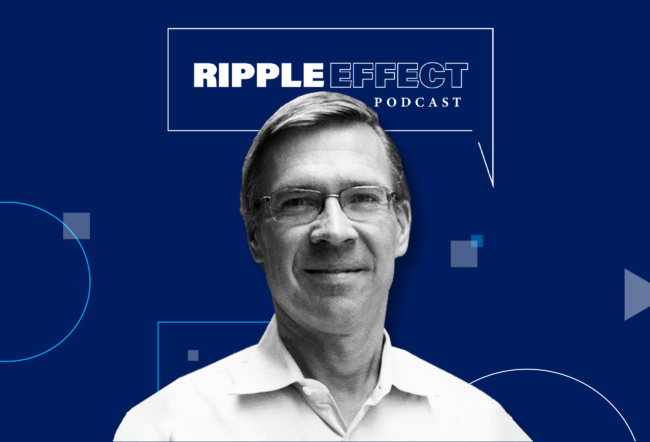For Microsoft, 2006 was a year of new product introductions: the Windows Vista operating system, a new version of Office, and the Zune music player, to name a few.
Microsoft CEO Steve Ballmer’s job: Convince customers that Microsoft’s latest products are ground-breaking enough to purchase, transform a company with $44 billion in sales into an agile innovator, compete against new business models that challenge Microsoft’s traditional approach to software development and recruit enough talent to keep the software giant relevant 25 years from now.
Ballmer joined Microsoft in 1980, five years after its inception. He has witnessed the company grow from 30 employees to almost 80,000. In 1998, he was named president of Microsoft, responsible for day-to-day operations, and two years later was named CEO. With a management style that he characterizes as “more bubbly” than most, Ballmer says leadership “requires a heavy degree of personalization” and the ability to adapt to new conditions.
The day before Microsoft’s Vista launch for business customers in New York City, Ballmer spoke at Wharton as part of the school’s Leadership Lecture series. During his talk, Ballmer emphasized that Microsoft’s style is to focus on the long term: His troops target a market and work until their products are competitive — an ethos that has been apparent in nearly every Microsoft product from Windows to Xbox and, most recently, Zune.
“We’re going to bet on our long term. We don’t do things for the short term. And if we don’t at first succeed, we keep trying,” he says. “If we don’t get what the customers really want, we keep going. It took us three attempts to get Windows right and if we had given up after attempt one or attempt two, Microsoft wouldn’t look anything like” it does today. “Leaders have to set the tone that says, ‘We’ll be patient.'”
Leaders Must Continuously Adapt
Ballmer’s patience will be crucial as Microsoft targets new growth areas. The company has two primary cash cows — its Windows and Office franchises — and has been spending heavily to expand into new markets. Microsoft’s Zune is designed to compete with Apple’s hugely successful iPod. Despite a third-place market share in search (behind Google and Yahoo), Microsoft is trying to close the gap. In addition, the company is facing the rise of entirely new ways of developing and distributing software that, according to Ballmer, present a challenge greater than that posed by any individual company.
To make a dent in these new markets, Microsoft has to instill the agility typically associated with startups into a massive company with $32 billion in cash and equivalents. Ballmer’s challenge is to adapt to the different markets that Microsoft is targeting. “I believe that good leaders will … adapt themselves to whatever the situation is that they face,” says Ballmer, adding that there is no single blueprint for leadership. “Leadership requires a heavy degree of personalization. A lot of lessons are valuable, but what’s probably more valuable is hearing people talk about their experiences and then developing your own model,” he says. The one characteristic, however, that he believes is “universally applicable to anybody who wants to be a leader” is passion. “You’ve got to love what you are doing.”
Ballmer readily admits that when he joined Microsoft he was not a computer expert, but he developed a passion about Bill Gates’ vision to put a computer on every desk and in every home. The company “spoke to this notion [that] most people [want] to have some kind of grander purpose about what they are doing,” Ballmer says. “And, yes, it’s about a career and, yes, it’s about taking care of family, and, yes, it’s about winning…. But, generally, people want to know that there is some bigger, more important thing out there [worth] really striving for. Leaders must set the tone about what the real purpose of any organization is. If you really want to inspire people and inspire their passions, you have to appeal to them in some way that is a little less generic than, ‘Hey, it’s good for the company. The company can earn a lot of money.'”
Developing passion is particularly critical in the markets where innovation is essential. “Because our business is software and software doesn’t wear out, we have to be about innovation,” says Ballmer. “If our new release isn’t any good, people will not upgrade to it.” He disputes the notion that Microsoft doesn’t innovate, adding that the company’s overall culture is about innovation. “No matter how you will judge … [what] … we have done or will do in the future, the culture, the leadership tone has got to be about innovation.”
According to Ballmer, Microsoft has maintained a position of leadership throughout a number of transformations in its business. The company helped to create the PC industry, transitioned from text-based interfaces to the era of graphical computing and evolved again when the Internet transformed information technology. “Unless you are really committed to building a culture of continuous change and innovation and transformation, you are not in good shape,” says Ballmer, who makes a distinction between personal adaptability and adaptability in response to evolving competitive threats. Indeed, Ballmer sees his job as assuring that Microsoft adapts to these new ways of doing business.
Competing Against New Business Models
“You know, everybody likes to have someone, a competitor, who is more interesting,” stated Ballmer. “We have many competitors. We have had very good competitors for years. We competed with IBM when nobody gave us a chance of succeeding — and we did [succeed] with Windows. We competed with guys like Lotus and WordPerfect and Novell, who started out ahead of us.”
Today Ballmer sees two major competitors for Microsoft — the open source software movement and advertising-supported software. According to Ballmer, the threat comes not from specific companies, but from the business models represented by these two trends. “Right now, the emblem of the first one is Linux and the emblem of the second one is Google. But it’s not the companies, it’s the phenomena” that present the greatest challenge to Microsoft.
The question surrounding open source software like Linux is whether this approach to software development can surpass that of commercial companies. “Will open source do a better job than a proprietary software company — any software company?” asks Ballmer. “It’s an interesting question — not just for us, but for anybody who is interested in business. The question is, can paid, commercial people do a better job than unpaid volunteers? The answer, I think, will be yes, but we’re going to have to push ourselves.”
The other threat facing Microsoft is what Ballmer characterizes as “ad funding” –software, such as that provided by Google, which is delivered for free over the web and monetized through advertising. Ballmer’s take on the rise of Google is that “getting search right was actually not the hardest part of the issue. They got ad funding — they really figured that out. And now the rest of us are going to have to learn that game.” Advertising is a new model for software and the question is, “Will we be as good at ad-funded software as we were at paid software?”
Squaring off against Google and figuring out an advertising-funded model for Microsoft software excites Ballmer more than other competitive challenges because it requires the software giant to be “extra agile, extra clever. I get extra fired up about that possibility. And yet, I’m confident in how we’ll do in that game. Certainly I’m confident in the long run.”
Why Innovation and Agility Matter
Microsoft’s confidence largely comes from a history of entering markets where it wasn’t top dog and yet eventually becoming a strong competitor. For example, Ballmer says that Microsoft is up to the challenge of being a late comer to a market like digital music players. “When you are not the first guy in the market, you have two choices at the beginning of the day: Get in or don’t get in. You just have to decide. Are you a company that is afraid to get into something where there is a clear market leader? We put our hands up and said, ‘No, we’re not going to be afraid of that.'”
To Ballmer, these new markets are marathons. “It’s going to take … patience and long-term innovation to win. It’s what it took us with Windows and, frankly, what it has taken most companies in our business.” Google, for example, “didn’t invent search. They weren’t the first guy to the party.” Ballmer points out that Google spent “six, seven, eight years before it established a position [in search] and beat AltaVista and Yahoo. It took Apple a while to come in on top of MP3 and music Players. SAP was at it for almost 20 years before they really got to critical mass with the SAP R/3 product.” For Ballmer, the issue is simple: “If you’re not the first with an innovation, do you shy away or not?”
And search is an area that Ballmer believes is ripe for innovation. Realizing that the company is playing catch-up to Google, Ballmer says Microsoft had to get in the game, but he also acknowledges that advancing search will be a long-term project. “We’re getting the basics right. We think that we have some clever ideas coming, but you know we’re going to be in there battling for years and years and years.”
Meanwhile, Microsoft is betting that there is opportunity for additional players to improve search. “Fifty percent of all searches still don’t ever result in an answer that answers the person’s question. And of the other 50%, most people will tell you that it took them longer than they thought it should have. That’s got to be a world where innovation matters.”
Innovating is one thing. Being agile enough to turn on a dime and take advantage of innovation is quite another. Ballmer acknowledges the challenge. “It’s not easy to change cultures…. We have almost 80,000 people working for us these days…. [What we] are working hardest on now is agility. What does it mean to be agile in the marketplace? Agility means that you are able to turn things around, that you can invent new things and yet you can still do things that require scale, discipline and execution.”
For a company the size of Microsoft, Ballmer says he’s trying to cultivate pockets of agile groups, some of which are “incredibly fast, but shallow,” and others that are slower, but “incredibly deep.” “How you knit [together] and enable people to get the best of all the cultural aspects in the organization is a challenge right now.” He insists that Microsoft can become more agile. While there is one overall Microsoft culture, beneath that is a wide range of sub-cultures which operate at different paces.
For instance, the Windows group, which is responsible for creating an operating system that needs to satisfy multiple requirements, will move slower than the Zune unit, which is targeting a specific niche. “What it means to be agile in the Windows product is quite different than what it will mean to be agile in delivering Zune. Windows shouldn’t update itself every three months…. Windows needs to be more things to more people than any other product I can name on the planet … so Windows has to try to be more encompassing.” Zune, on the other hand, is in a very different position, according to Ballmer. “Zune is nowhere in the market. So hit, run, work, find your niche — go, go, go, go! This is a whole different agility profile than what you need in Windows.”
The key “isn’t trying to put everybody on the same treadmill. The key is to strike the theme, set the tone, set the priorities among all of the leaders and then let them interpret what makes sense relative to what we are trying to get done in a given context,” says Ballmer.
Breaking with the Past to Compete in the Future
Sustaining this level of agility often involves making difficult choices. With the launch of Zune, for example, Microsoft introduced a product that was incompatible with the “PlaysForSure” digital rights management (DRM) scheme the company had been previously encouraging all its partners to use. Following the model that made Microsoft’s Windows so successful, Microsoft licensed PlaysForSure to multiple hardware vendors of digital music players. “We thought that was a brilliant strategy — [develop] an open ecosystem, get a lot of people [to support it].” What happened? As Ballmer puts it, “In this particular case, the whole was not bigger than the sum of the parts.” And, as a result, “Apple — with one model that was simple and consistent — wound up taking 75%-80% of the market.”
Microsoft believed it needed to move quickly to change its strategy. “So we said, ‘Okay, what do we have to do here?’…. We had to make the market, not just let our partners make the market…. We needed to get an absolutely consistent…user experience [and] retailer experience…. We said, ‘Look, we’ve got to take a different approach, build a new ecosystem and, by the way, we better do something that Apple hasn’t done.'”
Microsoft saw an opportunity in music sharing. “We believe in community; community means sharing…. How do I share my music with you? I want to be able to do that legally. So we said, ‘We’ll go out and negotiate for the rights.’ If I share a song with you, you can listen to it three times, or for three days, whichever comes first, then you can mark it and buy. That’s one of the features of Zune. But, as soon as you say that, it is inconsistent with PlaysForSure. The DRM information doesn’t know anything about that.”
The change in strategy was, in Ballmer’s words, a “very hard call.” But his conclusion was: “We could be consistent with what is out there, which hasn’t succeeded. Or, we can try a new approach, which we think has … merit and can succeed.”
As for the impact on Microsoft’s partners as a result of this change of strategy, Ballmer states, “Some of our partners will say ‘This wasn’t partner-friendly.’ But having our partners only have 20% of a market share between them is also not very partner-friendly. One of the key things … that I have learned about business partners is that business partners are your partners because they make money with you, they succeed with you. And if you don’t succeed, eventually you don’t have any partners.”
Attracting, Retaining Talent
Ballmer believes that the key to all of these goals is talent. Can Microsoft effectively recruit and retain the brainpower to expand its traditional markets while also tackling the challenges of the new business models introduced by the growth of the web? The task is even more crucial as rivals like Yahoo and Google are increasingly competing for talent.
Throughout Microsoft’s evolution during his tenure, Ballmer says the “number-one thing that has consumed my time is attracting great people, retaining great people and enabling people.” In the end, Ballmer says he’s recruiting for Microsoft’s next generation, trying to find people willing to continually reinvent the company. “If I were to do surveys with Microsoft right now [asking], ‘How many of our folks were around before Windows was a success?’ [The answer would be] it’s a low percentage. As a leader, then, my job has got to be to connect the dots for people who have had all different kinds of experiences.”
Ballmer recalls a question once posed to him by an intern: Where will Microsoft be 25 years from now? After some thought, Ballmer says, the only thing he could predict is that “we’re going to have great people…. And if we have great people and we have a leadership position today, then everything will take care of itself,” says Ballmer. “We’ll be driving the leading edge of technology. We’ll be making good money. We’ll be earning good returns for shareholders and all of that kind of stuff. But at the end of the day, the only thing that could be the magnetic north compass for the place over the next 25 years has got to be this notion of prioritization of people.”



